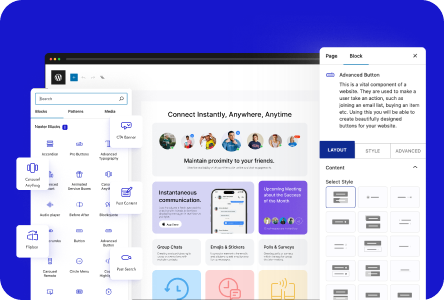Are you looking to create a custom product archive template for your WooCommerce store? By default, WooCommerce comes with a basic product archive template, but creating a custom one can help enhance the user experience and make your store stand out.
Requirement – This is a feature of Nexter Extension (Free) plugin, make sure its installed & activated to enjoy all its powers.
With the Nexter Theme Builder, you can create custom product archive templates that can resonate with your brand.
Note: You must have the WooCommerce plugin installed.
To create a product archive template using the Nexter Theme Builder, follow the steps –
1. From the Dashboard, go to Nexter Extension > Theme Builder > Add New Template.
2. In the popup, select Archive Page from the Select Template dropdown.
3. Then, in the Name of Template field, add the template name.
4. Then, click on the Next button.
5. On the next screen, you have to set the appropriate display conditions. From the Include/Exclude dropdown, you can choose whether to show or hide the template in the selected locations.
6. Then from the second dropdown, you have to select the location. Here you’ll find many product archive template related location options under the Products label –
- Default Products Archive – This will target the default products archive page i.e the shop page.
- Products : Product categories – This will target the product category page, you can also select individual product categories from Condition Type dropdown.
- Products : First Child Category – This will target the immediate subcategory page of a product category, you can also select individual parent product categories from Condition Type dropdown to target its first child category.
- Products : All Child Category – This will target all the subcategory pages of a product category, you can also select individual parent product categories from Condition Type dropdown to target its subcategories.
- Products : Product tags – This will target the product tag archive page.
Select the appropriate option for your template.
Based on the option selected, you’ll get an additional field to select the individual item of the source.
Note: You can add multiple locations.
You can click on the + Add Conditions button to add additional conditions. Follow the same process to add multiple conditions.
Note: Using multiple conditions, you can include the template in a certain location and exclude it from a certain location at the same time.
From the Preview Type and Preview ID dropdowns, you can select a post type and individual post respectively to check the template preview.
So when you check the template preview using the WordPress Preview option, it will use your selected archive page.
7. Once done, then click on the Create button.
8. Then it will open the WordPress editor, where you can use the WordPress blocks or Elementor to create the actual layout and content of the template.
Be sure to use product archive related blocks or widgets to ensure that your content is displayed correctly. If you are using Elementor, you can utilize the WooBuilder widgets from The Plus Addons for Elementor to easily customize your entire WooCommerce store, including the product archive template. These widgets offer a wide range of options to create a cohesive design across your WooCommerce store.
9. Once done, publish the template.
Now your archive template will be created and will show as per the set display conditions.
Also, check How to Create a Single Product Template in WordPress for Free.






